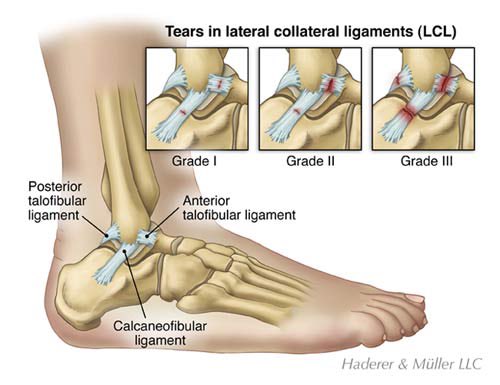A thread on ankle instability & why repeated ankle sprains are so common
Have you ever noticed that once you hurt the foot, it’s much easier to happen again?
30-40% of people who experience a lateral ankle sprain will get another one on the same ligament(s) (Konradasen, 2002)..
Have you ever noticed that once you hurt the foot, it’s much easier to happen again?
30-40% of people who experience a lateral ankle sprain will get another one on the same ligament(s) (Konradasen, 2002)..
Ankle sprains are one of the most common injuries in sports (Beynnon et. al, 2014).
The mechanicsm varies but two thirds of them involve the Calcaneofibular & Anterior Talofibular ligaments (Kaikkonon et. al, 1997).
Why people are so prone to chronic ankle instability is not
The mechanicsm varies but two thirds of them involve the Calcaneofibular & Anterior Talofibular ligaments (Kaikkonon et. al, 1997).
Why people are so prone to chronic ankle instability is not
fully understood yet.
However, a working theory is that these individuals have a considerable diminished sensation of sensory receptors in the ankle.
This results in a myriad of compensatory patterns, most frequently an inability to “trust” their bodyweight on that ankle as
However, a working theory is that these individuals have a considerable diminished sensation of sensory receptors in the ankle.
This results in a myriad of compensatory patterns, most frequently an inability to “trust” their bodyweight on that ankle as
they feel so unstable. This can lead to them carrying more weight on their other leg and hip which can cause a Trendelenburg pattern (shown below).
Gait analysis has shown that people with ankle instability enter the stance phase of gait with 6-7 degrees more than average of supination (Monaghen et. al, 2007).
The authors suggest it’s a lack of ability to sense ankle position subconsciously and/or a delay of activation of
The authors suggest it’s a lack of ability to sense ankle position subconsciously and/or a delay of activation of
muscles that pronate the foot.
Greater supination at heel strike results in likelihood of the ground-reaction forces causing a large and unexpected supination torque, thereby straining those same weak ligaments.
likelihood of the ground-reaction forces causing a large and unexpected supination torque, thereby straining those same weak ligaments.
It’s a viscous cycle.
To address this, looking at the
Greater supination at heel strike results in
 likelihood of the ground-reaction forces causing a large and unexpected supination torque, thereby straining those same weak ligaments.
likelihood of the ground-reaction forces causing a large and unexpected supination torque, thereby straining those same weak ligaments.It’s a viscous cycle.
To address this, looking at the
interplay between the pelvis & foot is key.
I do NOT want to give blanket advice to an unknown audience in these cases. But for educational purposes, this is an exercise I like to use as a first step to sense proper pronation if the context is right:
I do NOT want to give blanket advice to an unknown audience in these cases. But for educational purposes, this is an exercise I like to use as a first step to sense proper pronation if the context is right:

 Read on Twitter
Read on Twitter





